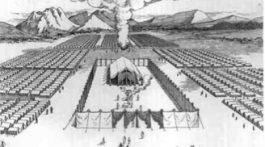In the past two issues of OUTLOOK we have considered some of the greatest challenges facing the church, particularly authenticity and diversifying evangelism. This month I will address a more comprehensive challenge—our church’s organizational structure.
With official membership worldwide now exceeding 18 million, the Adventist Church is a very large family, as denominations go. With at least some presence in nearly every country in the world, our footprint truly is global.
Years ago a gentleman asked me, “Mr. Lemon, how well do you know your church?” Without waiting for my answer, he continued, “I travel the world regularly and only three things are universal: Roman Catholics, Coca Cola and Seventh-day Adventists.”
The organizational challenges we face today are enormous. Simply agreeing on word definitions is difficult. And while it is tempting to see the church only through the lens of my local situation, even that in the United States can be rather diverse. Within our own Mid-America Union, the College View Church with its very large membership is different from our church in Rock Springs, Wyoming, which is different still from the Karen groups in Minnesota—yet they are all legitimate expressions of Adventism with differing needs that sometimes require differing procedures and policies.
Then there is the financial challenge of the world economy whose graphic presentations resemble the blueprint of a roller coaster. Financial future-casting is amazingly challenging as we seek to maintain our unique system of dispersing tithes and offerings in support of our schools and other organizations.
Empowering local churches
In 1901 Ellen White foresaw our church’s present needs and superintended an organizational shake up of the General Conference that year. She spoke strongly against the “kingly power” of Adventist church leadership as it then existed in Battle Creek. The structure we have in place today is a result of her leadership: local churches comprising conferences that join to comprise unions that make up the General Conference, expressed in 13 divisions worldwide.
There is a tendency toward centralization of power for organizations like ours. That proclivity among leaders and members alike must be guarded against. Leaders are not to “lord it over” others, but to act as servants in the cause of Christ (see Matt. 20).
There are neither baptismal pools nor offering plates in offices of our local conferences, unions, divisions or the General Conference. The church does not grow in office buildings. It grows in communities, neighborhoods, families—all of which center in the local church. Consequently, the organization at its various levels must continually seek to enable and honor the creativity found in our local communities.
Choosing to collaborate
And what about unity? How this church remains a unified body in the 21st century may be one of the biggest hurdles. Can we be united within our diversity without caving in to strident demands for uniformity?
I would suggest that an attitude of unity is a creation of the Lord God and not the doing of human beings. Jesus pleaded with his Father in John 17 that God Himself make the believers “one.” Without that, the church of Jesus Christ would not have survived the last 2,000 years of external attack, internal squabbles, theological upheaval, organizational infighting, and the continuous temptation toward giving up.
If the Lord does not keep His church working together, no policy, program, president, committee nor event will ever do that.
In the final analysis, the answer to every challenge facing the church, whether pertaining to evangelism, finances, structure or relationships, is for each of us—both individually and corporately—to walk daily with Jesus Christ. He alone is our Savior; He alone established the church; and He alone can and will continue to unify us.
This editorial was also published in the June 2015 print edition of OUTLOOK. It’s part of a three-part series.









